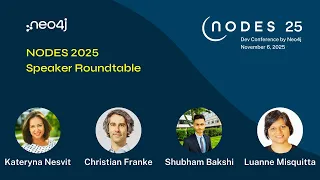What is a Knowledge Graph?
In today’s data-driven world, understanding the relationships between data points is crucial. Knowledge graphs offer a powerful way to represent and navigate complex data interconnections.
The above video provides an insightful and beginner-friendly introduction to this concept.
Understanding Knowledge Graphs
A knowledge graph is a structured representation of information, where entities (such as people, places, or concepts) are represented as nodes, and the relationships between them as edges.
This graph-based data model allows for a more intuitive and flexible way to store and query information compared to traditional relational databases.
Learn more in Neo4j’s Knowledge Graph documentation.
Key Benefits Highlighted in the Video
Enhanced Data Context
By connecting data points through explicit relationships, knowledge graphs provide richer context, which leads to more intelligent insights and decision-making.
Flexibility and Scalability
Unlike rigid relational schemas, knowledge graphs can evolve over time. You can introduce new nodes, relationships, and attributes with minimal refactoring—perfect for dynamic domains.
Improved Query Efficiency
Using a native graph database like Neo4j, you can query deeply connected data efficiently—ideal for complex analytical tasks like pattern recognition, graph traversal, and entity resolution.
Real-World Applications
The video showcases how knowledge graphs are transforming diverse industries:
- Search Engines: Deliver context-aware results by linking related concepts.
- Recommendation Systems: Offer personalized suggestions based on relationships between users, products, and behaviors.
- Fraud Detection: Spot suspicious patterns by analyzing how entities interact.
- Healthcare: Map connections between symptoms, diagnoses, and treatments to support precision medicine.
Explore additional use cases on Neo4j’s Industry Solutions page.
Getting Started with Neo4j
Neo4j provides everything you need to build a knowledge graph:
- Neo4j Desktop & Aura: Local or cloud-based deployment options.
- Cypher Query Language: Neo4j’s intuitive graph query syntax.
- Visualization Tools: Native browser, Neo4j Bloom, and integrations with BI tools.
Get started with Neo4j’s free developer tools and interactive tutorials.


